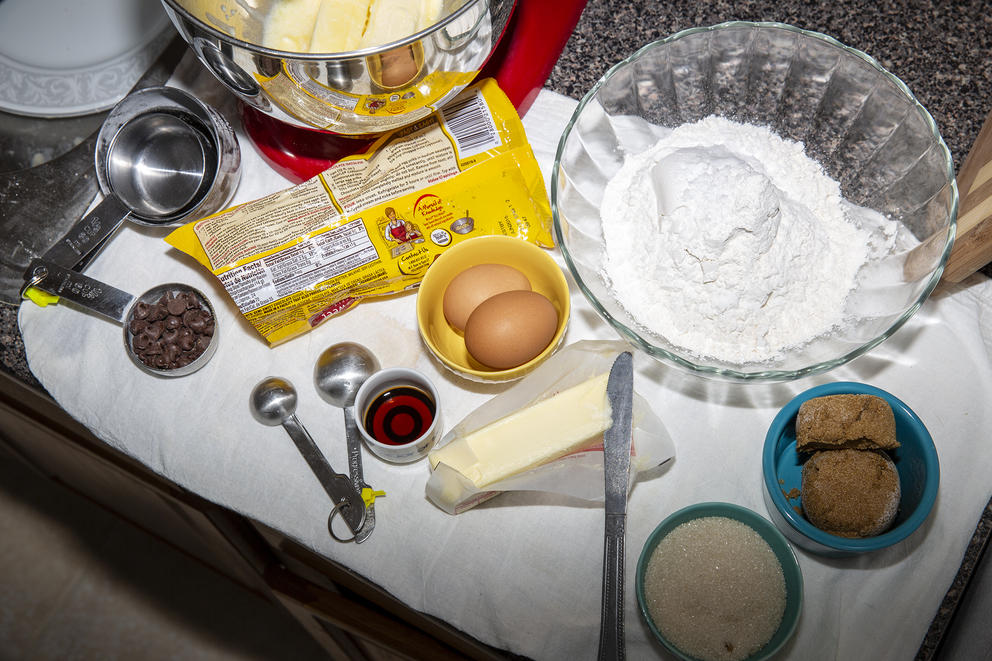Coronavirus has changed our reality for the foreseeable future, prompting questions from you about how to navigate our strange new normal. In this weekly column, we hope to answer them with practical advice, ideas and solutions. Ask your question at the bottom of this story.
Question: We are a great neighborhood. A question we wanted to know is whether we can share baked goods? The real question is: What about food? Is the virus fragile with heat, as in baked goods? How long does it last on them? What about refrigerated goods, i.e. cold tolerance?
I don’t have much of a sweet tooth. Croissants, bagels, savory scones and especially empanadas are more my bag. Even a simple French baguette for me to put a soft, gooey egg on is spectacular. But just in case, go ahead and bake some oatmeal raisin cookies — you know, plump and soft in the interior, but with a crisp, al dente edge. If someone tells you to make chocolate chip ones instead, correct their shameful blasphemy. But do it politely, for they have been misled by the twin devils Amos and Tollhouse, and their sin is one of ignorance. I’m getting hungry. Where exactly do you live again?
For once, I have some pretty great news. According to the U.S. Department of Agriculture and the Centers for Disease Control and Prevention, there is no evidence for food-borne transmission of the coronavirus, either on the food itself or through packaging. While there’s limited data about how long the virus can survive on food itself, it thrives longer (in some cases, hours or even days) on nonporous surfaces like plastic or metal and degrades quickly on organic surfaces.
Last week, readers asked: Can I get elective surgery? Is my bike commute safe? Can fish tank cleaners enter my home?
The risk isn’t zero, but the chances a significant viral load can survive on food to infect you is vanishingly low. When in doubt, early evidence suggests reheating your food for 3 minutes at a minimum of 145 degrees oughta blast everyone’s least favorite pathogen out of existence. (Cold weather and even snow can’t stop the li’l bugger, though, so refrigeration is no help.)
Additionally, the coronavirus needs to enter your body through the respiratory tract to gain a foothold and reproduce. (The nose and eyes can be entryways, but when was the last time you literally eyeballed a scone or snorted a cookie?) The virus isn’t adapted to infect you through the digestive system, and enzymes in your saliva combine with chewing to further break it down. This is part of why takeout food is considered safe: The main risks come from encountering people along the way, not from restaurant workers who follow stringent, government-mandated food safety protocols.
About those protocols: If you are cooking for others, you should probably follow the protocols in your own home, in perhaps stricter fashion than you’re used to. (Here’s a refresher from the CDC.) Some are fairly common sense: Don’t make food if you’re experiencing symptoms or have been near people who have, prepare food on sanitized surfaces and equipment and don’t touch your face while cooking. And as always, wash your hands before and after preparation (and between cooking tasks if you can), and especially before packaging and delivery. Make sure to use freshly cleaned containers. When it comes time to delight your neighbors, make like a DoorDash hero and practice contactless delivery by leaving it on a doorstep and texting or calling them at a distance before I can steal it.
The mental health benefits of both cooking and eating are well-documented and require no scientific backup (OK, fine, here). And in a time when connecting with others is difficult and we often feel powerless, it’s a way to truly help the community. But most important of all, it’s a way to get delicious food into my body, because the ol’ tummy is getting mighty rumbly just this second.
When you think about it, we’re all neighbors in the Northwest as a whole. Distance is relative, so “Washington” is technically a neighborhood. I’ll email you my address.



